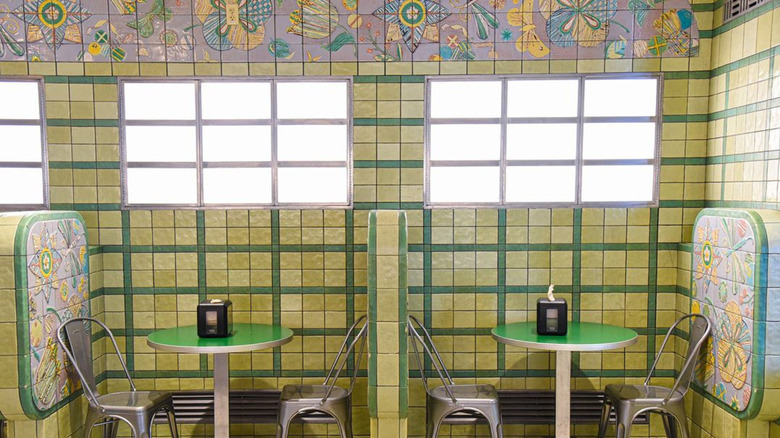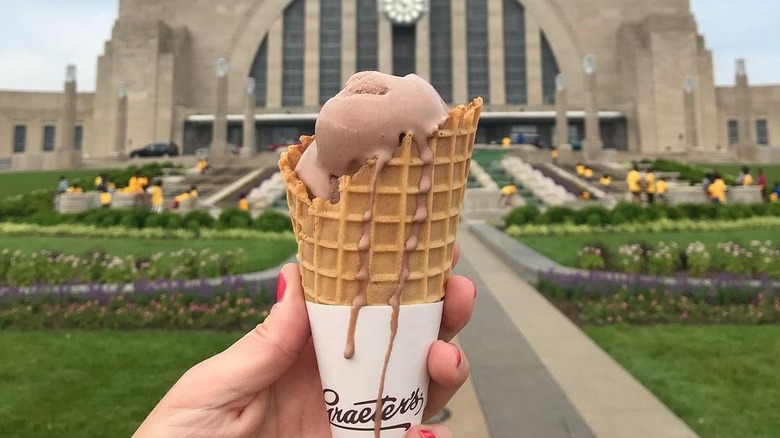The Ohio Ice Cream Parlor That's An Art Deco Dream
Cincinnati, Ohio is infamous for its regional (albeit controversial) take on chili, but the Queen City is also home to a chill treat with a long local history. Rookwood Ice Cream Parlor is a pastel jewelry box trimmed in minty shades of green. The former tea room was converted into a candy-colored creamery, serving up sundaes and cool confections. The ice cream parlor, which reopened in 2018, is housed in Cincinnati's half-domed Union Terminal, a historic former train station and an enduring feat of art deco luxury.
Union Terminal first opened in 1933, a triumph of the sleek, stylish art deco movement that swept much of the '20s and '30s. The grand structure cost $41 million to construct and boasted a morass of bookshops, toy stores, clothing stores, eateries, a diner, and a movie theater. What is now Rookwood Ice Cream parlor, began as a tea room. Shortly after opening during WWII, the Rookwood Tea Room served as a USO headquarters and delivered coffee to traveling troops.
Rookwood is rooted in Ohio history
Today, the confectionary doles out scoops of Graeter's Ice Cream. The local family-helmed establishment was founded by Louis Charles Graeter in 1870, and began as a pair of ice cream carts. Since its inception, Graeter's has produced its ice cream using a French pot method. Traditionally, French ice cream uses eggs, giving the final product a rich base. During the French pot process, creamy custard is poured into a spinning 2 ½ gallon open container, resulting in dense ice cream that is high in butterfat and low in air.
Rookwood Ice Cream Parlor is fitted with a puzzle of verdant tiles, stretching from floor to ceiling. Like the local business that supplies the parlor's frozen fare, the pottery company from which the glittering green shop gets its name, is a Cincinnati mainstay. Founded in 1880 by Maria Longworth-Nichols, Rookwood Pottery has supplied ceramics and tiles to other scions of American architecture, including New York City's subway system.

